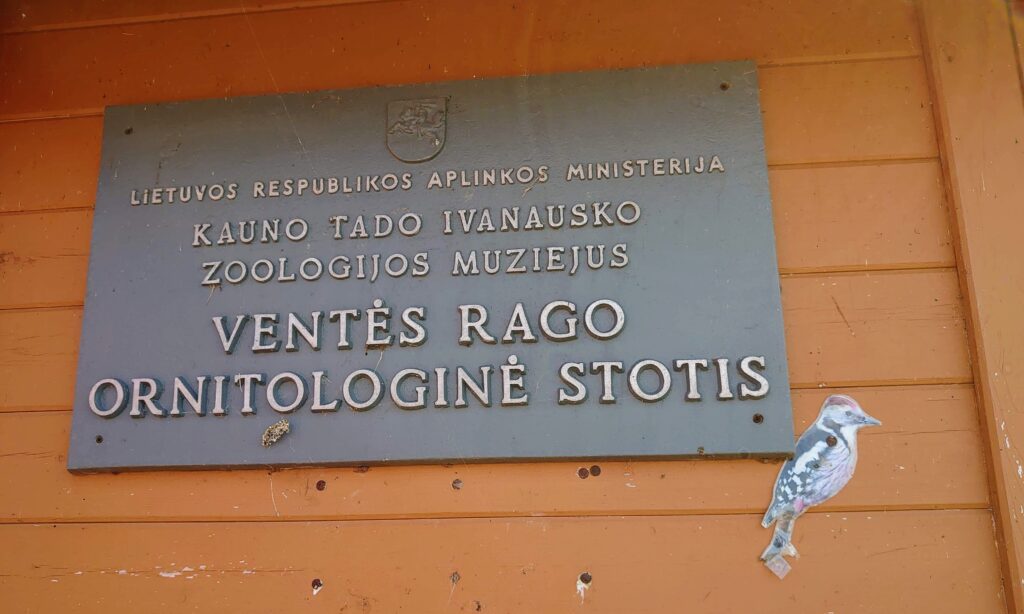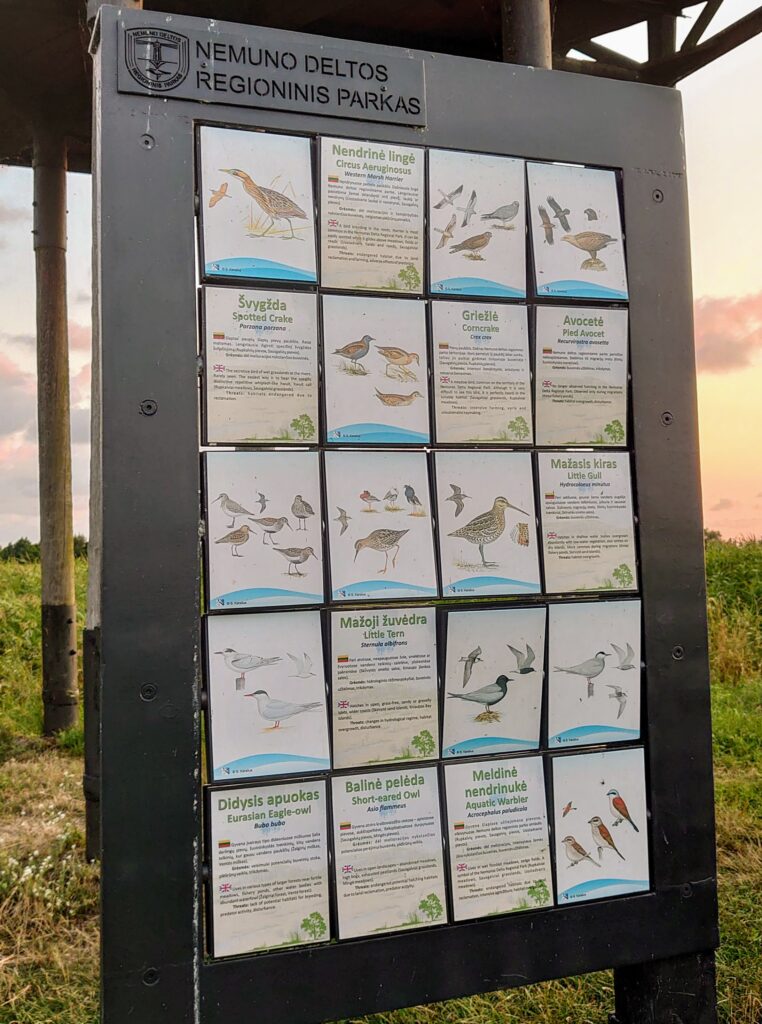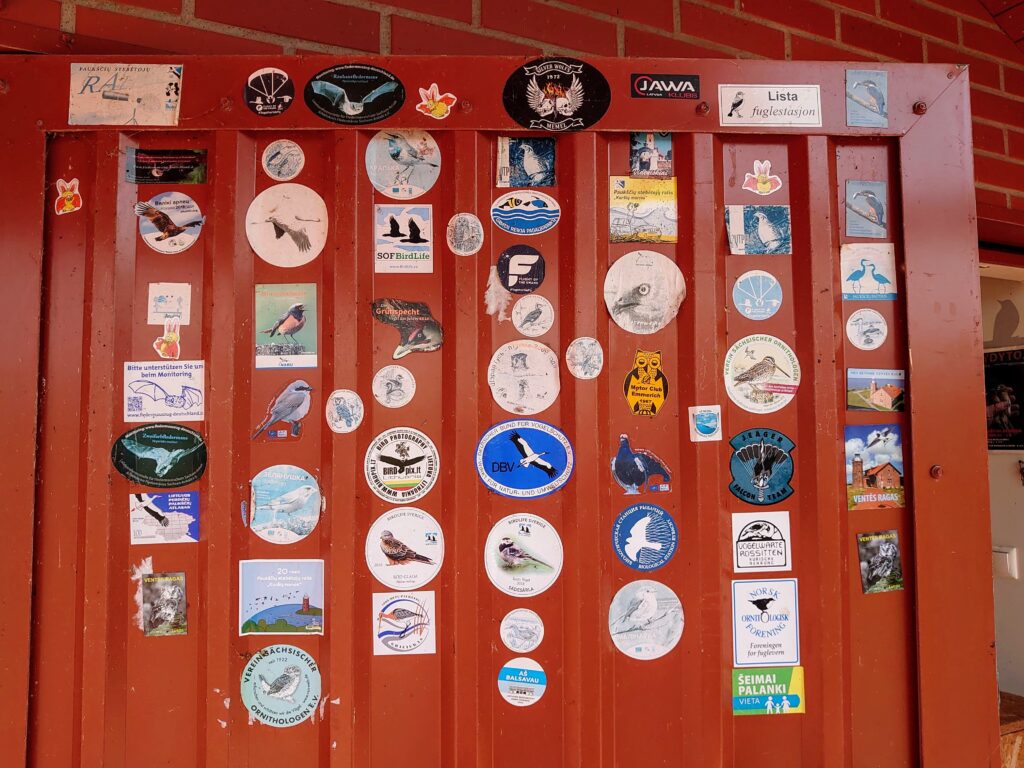An Estonian Summer Interlude
Blog post by Elle-Mari Talivee

Covid-19 has made us rather place-dependent, so I really wanted to make a little trip this summer inside the relatively safe “Baltic bubble”. I had never been to the Nemunas delta in Lithuania, where this great river flows into the Curonian Lagoon. The lagoon is closed by the bow-shaped Curonian Spit, which from Klaipeda, Lithuania reaches out to Kaliningrad Oblast, Russia. For birdwatching, the second half of July is not particularly productive. So, the result was more like a scouting trip to the ringing stations in Lithuania and Latvia, with the idea of returning.
The Nemunas delta is a kingdom of migratory birds. Even during dry July it is possible to understand how lively the area must be in spring and autumn. In spring, the meadows are flooded and villages become islands there. In summer, however, everyone can take a boat trip on the tributaries, where alders stand on riverbanks like mangroves. In the reeds, grey herons and great egrets are standing; coots, moorhens and countless ducks feed around them. Cormorants sit on tree branches. On the meadows, cranes and geese get startled by a passer-by, but for only a moment. Harriers fly around like kites. Every household has a nest of white storks. Starlings are gathering in flocks. An information board tells you which kind of wonderful waterbirds stop here in the spring. Autumn, however, is the best time to meet all kinds of little migrants. In Ventė Cape ornithological station, opened in 1929 (recently renovated, it houses a museum as well), you can see the world’s largest bird trap – a giant Heligoland trap that catches thousands and thousands of birds and bats a year to be ringed. The station is working in summer too, in July rather quietly and lazily. Young swallows practise flying tricks and at least in Lithuania, there are lots of them: not only farmhouses but also the ornithological station have countless nests built by house martins and barn swallows under their roofs.

Standing in the tower of the tiny lighthouse in Ventė, I suddenly longed for wings of my own: across the Curonian Lagoon, but on the other side of the border, in Kaliningrad Oblast, is the oldest ornithological station in the world, Vogelwarte Rossitten, now known as Biological Station Rybachy. It was founded in 1901 by the German ornithologist and pastor Johannes Thienemann. It is not possible to get over there because of Covid-19 restrictions.
On the Lithuanian side of the Curonian Spit, in Neringa, there is another smaller bird station where birds are caught in autumn. And a little further north, in Latvia, is the Pape ornithological station, opened in 1966. In Pape, Latvian ornithologists first used mist nets to catch birds, then the station received a bigger trap as a gift from Rybachy, and now they put up a Heligoland trap in the autumn. Biology students from the Latvian university were already there looking after the nets: as elsewhere, bats are caught there for ringing as well as migratory birds.


These destinations are actually ideal in summer: although there are fewer birds to be seen, one can swim in the sea, in the Curonian Lagoon and the Nemunas river tributaries, and at least for a moment borrow a bird’s eye view, while climbing on the sand dunes of the Curonian Spit up to 60 metres from the sea level. Once upon a time, Thomas Mann spent his summers there.
Heading north again and seeing the migratory birds already planning to go southwards, it is possible to conclude: the bats and birds that migrate along the Baltic coast and do not get a ring marked ESTONIA MATSALU at the Kabli ringing station in Estonia, can choose for example between the Pape, Neringa, Rybachy and, of course, Ventė ornithological stations on their way south.


